Here are some of them:
grey color goes well with blue, beige, red, Burgundy, brown, blue;
blue with red, green, brown;
beige - orange, yellow and brown;
blue - gray and red;
pink with grey, brown and blue;
black and white combined with any color.
Before binding of the ornament, you should choose a pattern, apply it on checkered paper or tracing paper legend. When knitting multi-colored pattern to apply it on a schema with a pencil or crayon of the corresponding color. The pattern for product design you can think of yourself, or take ready-made embroidery "cross" (one of the "cross" corresponds to one loop). The ornament is written in scheme and is knitted from the bottom up.
When performing an ornament two spokes most often used "socks knitting".
When performing a pattern of five knitting needles knit facial loops in a circle.
Knitting ornament with colored threads called "jacquard".
The ornaments are divided by national and age characteristics. There are also ornaments for men and women. Consider some of them.
1. NORWEGIAN
Snowflakes and stars, made a red, white and black threads are key to this ornament.
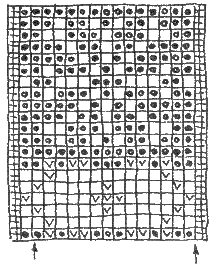
Figure 75.
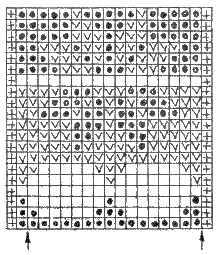
Figure 76.
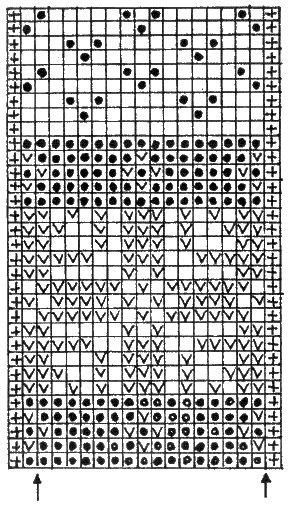
Figure 77.
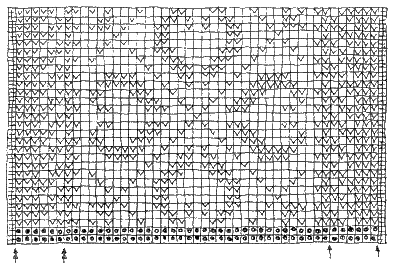
Figure 78.
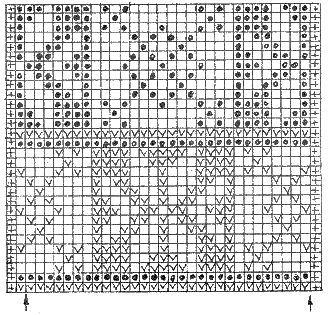
Figure 79.
2. CONTRAST
Running threads of two colors, dark and light (black and white, yellow and brown, blue and white, etc.).
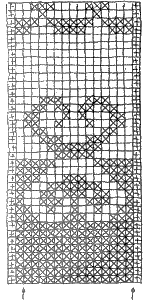
Figure 80.
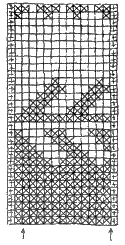
Figure 81.
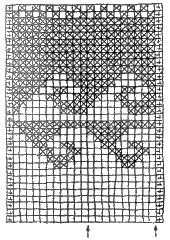
Figure 82.
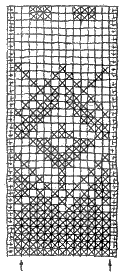
Figure 83.
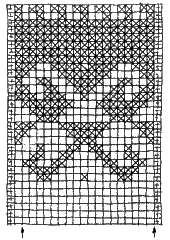
Figure 84.
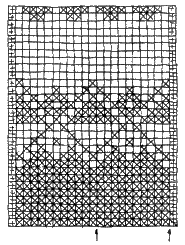
Figure 85.
3. ORNAMENTAL STRIPS
Filaments of two or more colors. Promazyvaetsya pattern has a geometric pattern (squares, triangles, etc.).
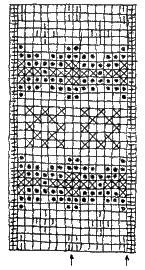
Figure 86.
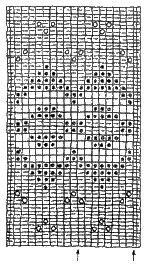
Figure 87.
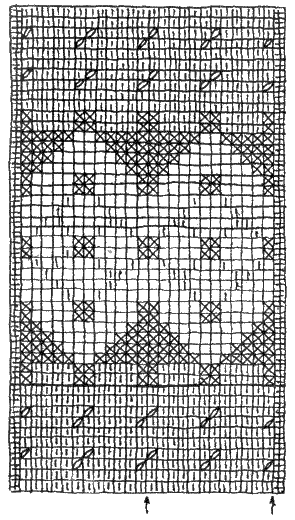
Figure 88.
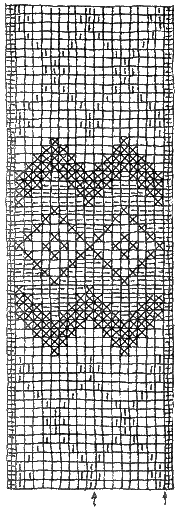
Figure 89.
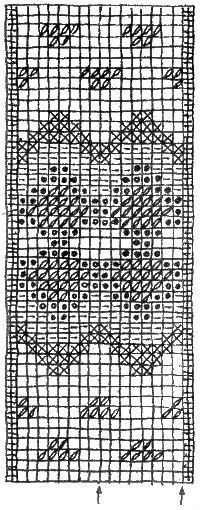
Figure 90.
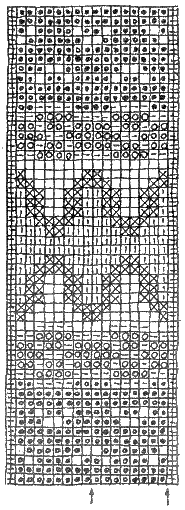
Figure 91
4. ANIMAL SKIN
Used yarn of several colors. Promazyvaetsya pattern reminiscent of animal skins.
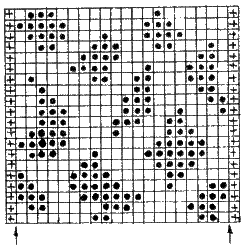
Figure 92.
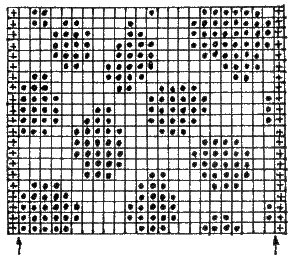
Figure 93.
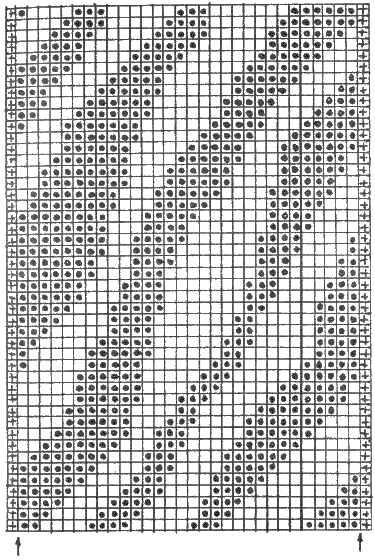
Figure 94.
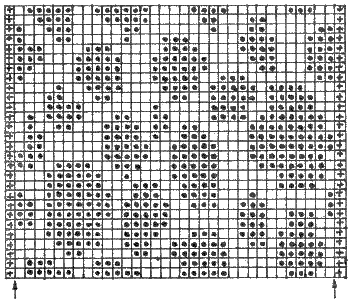
Figure 95.
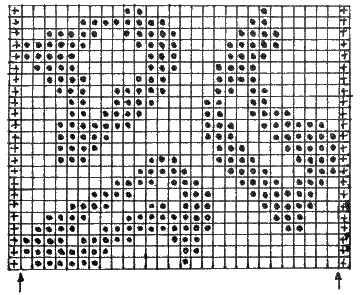
Figure 96.
5. VEGETABLE
Multicoloured thread. Promazyvaetsya pattern, reminiscent of a vegetable nature (flowers, grass, trees, etc.).
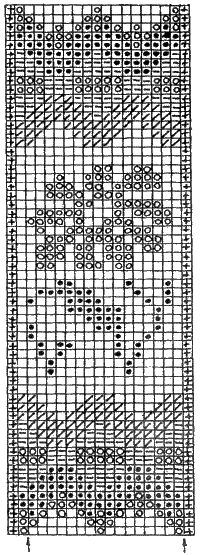
Figure 97.
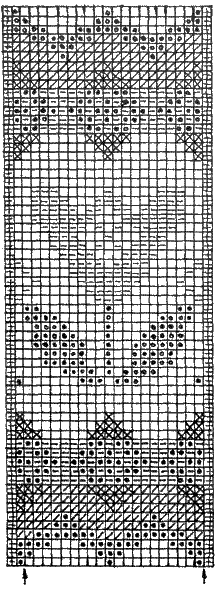
Figure 98.
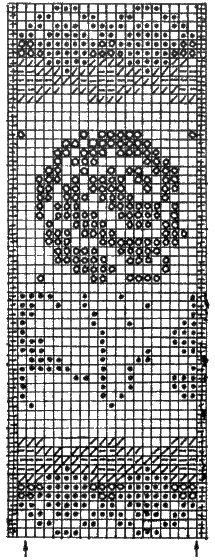
Figure 99.
6. NORTHERN PEOPLES
Filaments of two or more colors. Promazyvaetsya pattern, including the national ornament and paintings with national motifs.
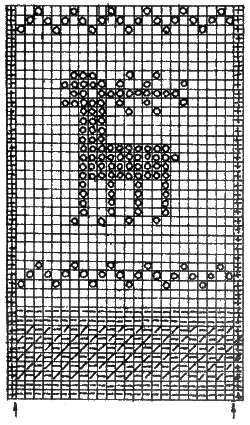
Figure 100.
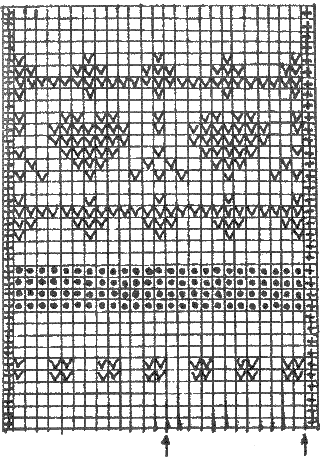
Figure 101.
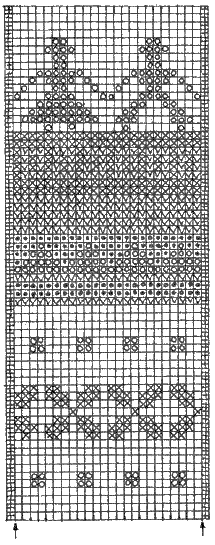
Figure 102.

Figure 103.
7. CHILDREN
Fit threads in bright colors of two or more colors. Ornaments used in the drawings of children (cubs, kittens, chickens, etc.).
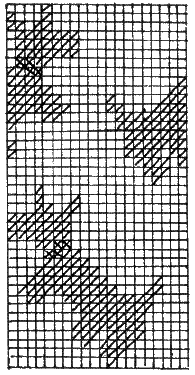
Figure 104.
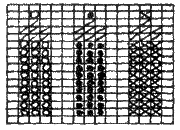
Figure 105.
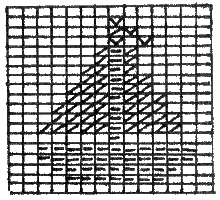
Figure 106.
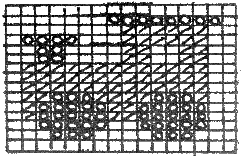
Figure 107.
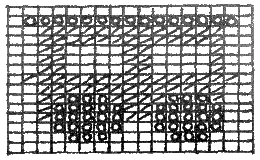
Figure 108.
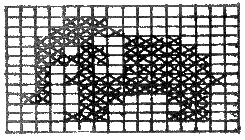
Figure 109.
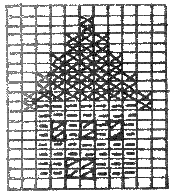
Figure 110.
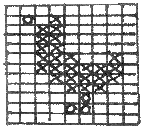
Figure 111.
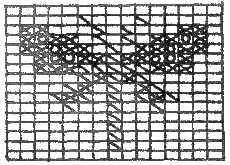
Figure 112.
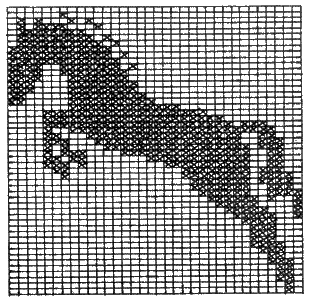
Figure 113.
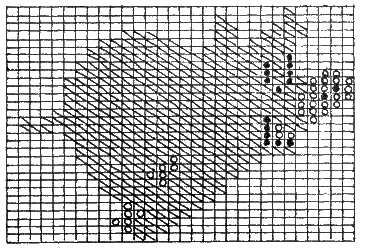
Figure 114.
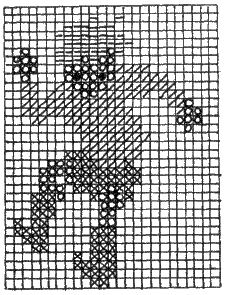
Figure 115.
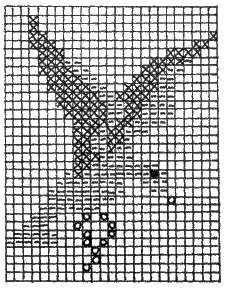
Figure 116.
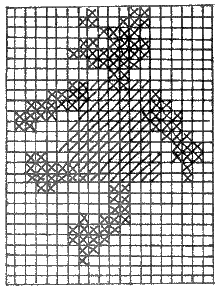
Figure 117.
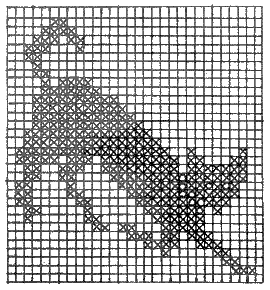
Figure 118.
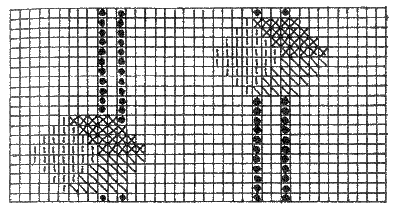
Figure 119.
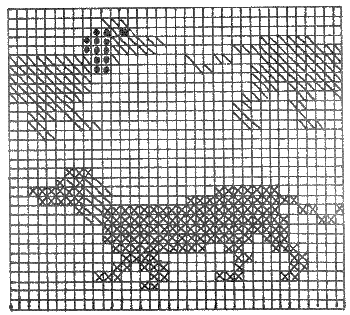
Figure 120.
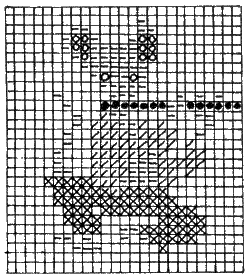
Figure 121.
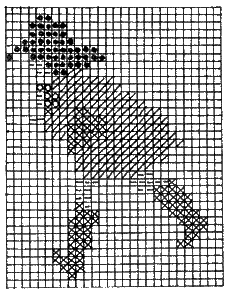
Figure 122.
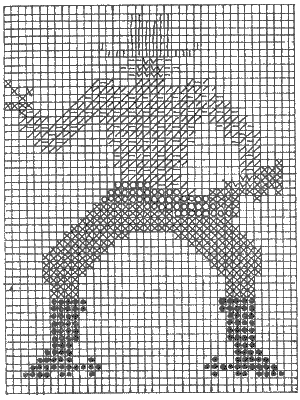
Figure 123.
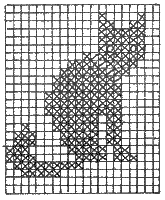
Figure 124.
8. USEFUL TIPS
If the pattern between loops one color large, distance that stretches outside the thread will fix this: in each of the front row, before you purl into the front loop, work the needle introduced into the loop on the left needle, once on a broken thread, the second time under the working thread (figures 125, 126).
Odd-numbered rows are always executed on the front side and even numbers on the reverse.
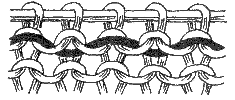
Figure 125.
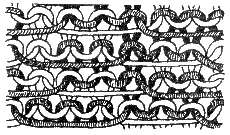
Figure 126.



